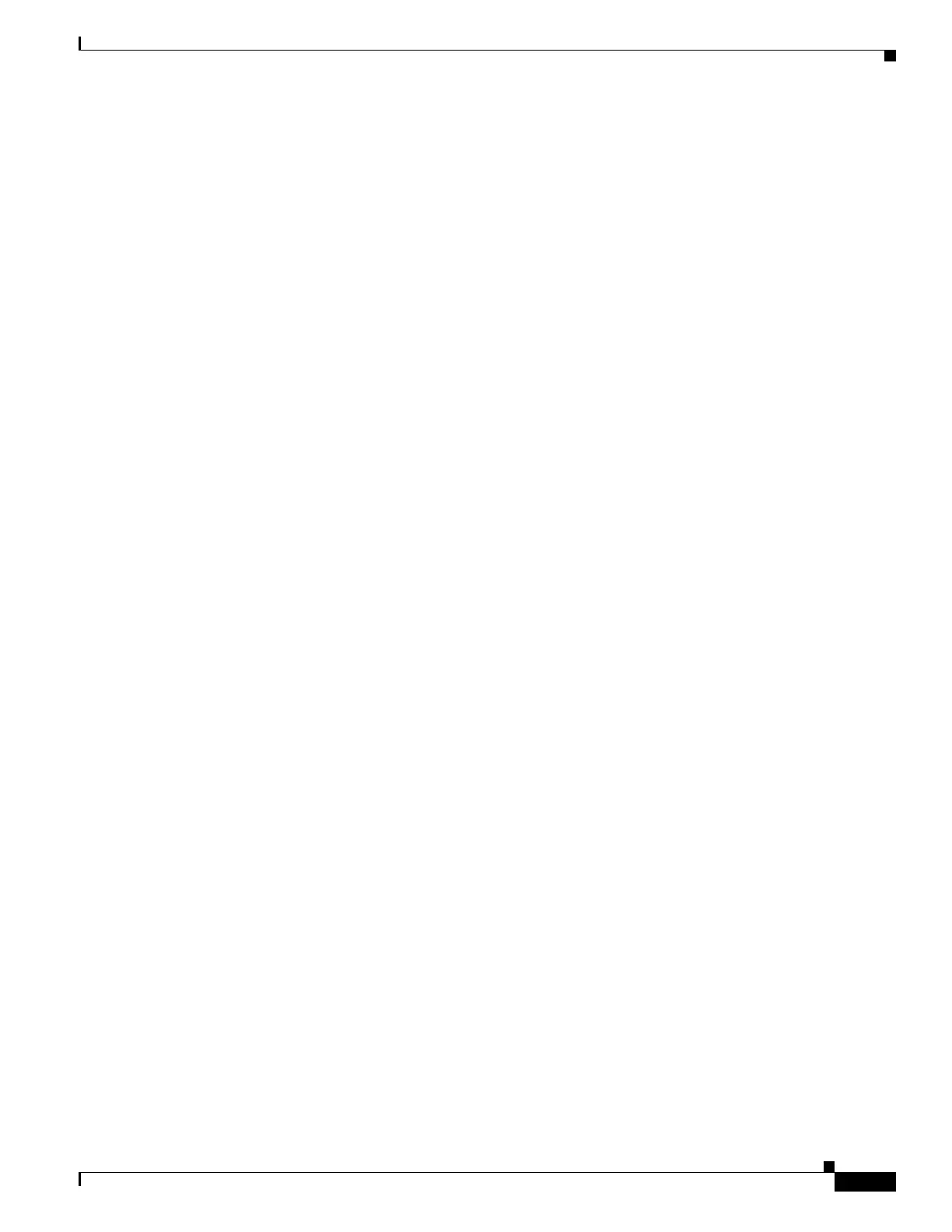1-43
Cisco ONS 15454 DWDM Reference Manual, R8.5
78-18343-02
Chapter 1 Shelf Assembly Hardware
1.12.2 Fiber Management Using the Patch-Panel Trays
Determine your fiber size according to the number of cards/ports installed in each side of the shelf. For
example, if your port combination requires 36 fibers, 3-mm (0.11-inch) fiber is adequate. If your port
combination requires 68 fibers, you must use 2-mm (0.7-inch) or smaller fibers.
1.12.2 Fiber Management Using the Patch-Panel Trays
The optional patch-panel trays manage the connections between multiplexer/demultiplexer and TXP
cards by splitting multiple fiber push-on (MPO) cables into single fiber connections (LC cables). The
patch-panel tray consists of a metal shelf, a pull-out drawer, a drop-in patch-panel module, and various
cable routing mechanisms.
1.12.2.1 Standard and Deep Patch-Panel Trays (32-Channel)
There are two patch-panel trays intended for use with 32-channel cards, the standard tray (1 RU deep)
and the deep tray (2 RUs deep). Both the standard patch-panel tray can host up to eight ribbon cables
(with eight fibers each) entering the drawer, or 64 cables (with a maximum outer diameter of 2 mm
[0.079 in.]). The deep patch-panel has the bulkheads organized in 8 packs, each housing 8 LC adapters,
which allows for more room for internal fiber routing as well as more clearance for ingress and egress
of the cables. The deep patch-panel comes with the MPO-LC cables preinstalled.
Because the standard and deep patch-panel tray can each host 64 connections, hub and ROADM nodes
will typically require two standard patch-panel modules each, and other DWDM nodes might require
one. (Only one standard or deep patch-panel tray is necessary for terminal nodes.) The module fits
19- and 23-inch (482.6-mm and 584.2-mm) ANSI racks and 600 mm (23.6 inch) x 300 mm (11.8 inch)
ETSI racks, using reversible brackets.
Figure 1-41 shows a partially fibered standard patch-panel tray.

